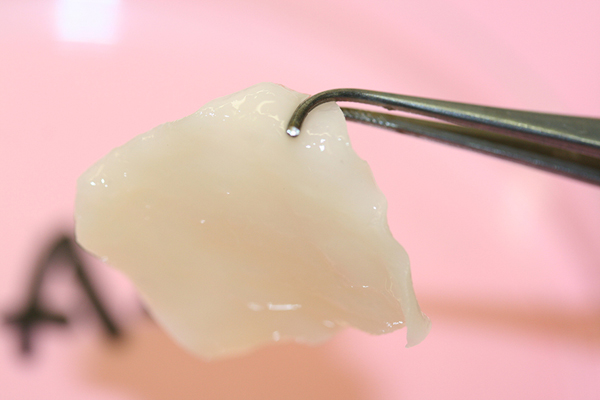
Cartilage grown to reconstruct nose

Scientists at the University of Basel have reported the first ever successful nose reconstruction surgery using cartilage grown in the laboratory. They used a method called tissue engineering, where cartilage is grown from patients’ own cells.
This new technique was applied on five patients, aged 76 to 88, with severe defects on their nose after skin cancer surgery. One year after the reconstruction, all five patients were satisfied with their ability to breathe as well as with the cosmetic appearance of their nose. None of them reported any side effects.
The results will be published in the current edition of the academic journal The Lancet.
Cartilage cells were extracted from the patient’s nasal septum, multiplied and expanded onto a collagen membrane, generating cartilage 40 times the size of the original biopsy. The so-called engineered cartilage was then shaped according to the defect and implanted.
The type of non-melanoma skin cancer investigated in this study is most common on the nose because of its cumulative exposure to sunlight. To remove the tumour completely, surgeons often have to cut away parts of cartilage as well.
Usually, grafts for reconstruction are taken from the nasal septum, the ear or the ribs and used to functionally reconstruct the nose. However, this procedure is very invasive, painful and can – due to the additional surgery – lead to complications at the site of the excision.
Other benefits
“The engineered cartilage had clinical results comparable to the current standard surgery,” said Ivan Martin, professor for tissue engineering at the university’s department of biomedicine.
“This new technique could help the body to accept the new tissue better and to improve the stability and functionality of the nostril. The method opens the way to using engineered cartilage for more challenging reconstructions in facial surgery such as the complete nose, eyelid or ear.”
The same engineered grafts are currently being tested in a parallel study for articular cartilage repair in the knee. Despite the optimistic perspectives, the use of these procedures in the clinical practice is still rather distant.
“We need rigorous assessment of efficacy on larger cohorts of patients and the development of business models and manufacturing paradigms that will guarantee cost-effectiveness,” Martin said.

In compliance with the JTI standards
More: SWI swissinfo.ch certified by the Journalism Trust Initiative















![The four-metre-long painting "Sonntag der Bergbauern" [Sunday of the Mountain Farmers, 1923-24/26] had to be removed by a crane from the German Chancellery in Berlin for the exhibition in Bern.](https://www.swissinfo.ch/content/wp-content/uploads/sites/13/2025/12/01_Pressebild_KirchnerxKirchner.jpg?ver=a45b19f3)













You can find an overview of ongoing debates with our journalists here . Please join us!
If you want to start a conversation about a topic raised in this article or want to report factual errors, email us at english@swissinfo.ch.